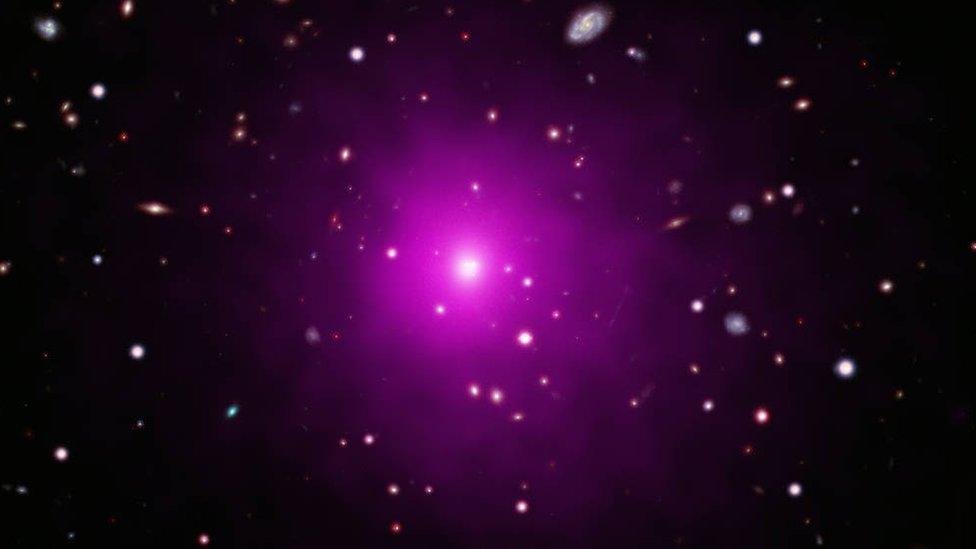Supermassive black hole missing: Scientists left confused
- Published

The missing black hole should be in the in the centre of the galaxy cluster Abell 2261, which is located about 2.7 billion light years from Earth.
Scientists have been left scratching their heads, as it appears a supermassive black hole at the centre of a far off galaxy seems to be missing.
Despite searching with NASA's Chandra X-ray Observatory and Hubble Space Telescope, astronomers have no evidence that a distant black hole estimated to weigh up to 100 billion times the mass of the Sun is anywhere to be found.
The galaxy cluster Abell 2261 is located about 2.7 billion light years from Earth.
A light-year is the distance light travels in one earth year (it's a long way - about 9 trillion km/6 trillion miles). So when astronomers look at this black hole they're actually seeing how it appeared far in the past.
So don't worry - this black hole is pretty far away!
What is a black hole?
Black holes are formed when a dying star collapses inward under the pressure of its own weight. This leads to something called a supernova, a star's extremely powerful explosion.
Black holes are places in space where the pull of gravity is so strong that even light can't escape it! This is what makes them hard to see. At the centre of a black hole there's something called a quasar, which is powered by so much activity going on near to the black hole. The light of a quasar can be 600 trillion times brighter than our sun and this is what astronomers look out for when discovering black holes.
The missing black hole should be in the centre of the enormous galaxy, as every large galaxy in the Universe should have one. So why not this one?
Astronomers have been searching the centre of the Abell galaxy for some time using data collected in 1999 and 2004, but to this date have failed to find the elusive black hole.
Here's what a black hole looks like
But with new observations from NASA's Chandra Observatory recorded in 2018, a team from the University of Michigan in the USA have considered an alternative explanation - that the black hole was ejected from the centre of its galaxy.
This event may have resulted from the merging of two galaxies. If two black holes merge to create on big one, the other can be sent off into the opposite direction - what is known as a recoiling black hole - and could therefore be mysteriously floating off in space.
WATCH: What happens when a star gets too close to a black hole [Animation: Nasa's Goddard Space Flight Center]
The latest study found there were no X-ray emissions from the centre of the galaxy nor in anywhere else to indicate the black hole's location.
Whilst it is known that smaller black holes can merge, there is no evidence to date which suggests supermassive black holes have, so if that is the case then that would be a huge breakthrough in astronomy.
Although the search was unsuccessful, hope remains for astronomers looking for this supermassive black hole in the future. When it is finally launched later this year, the James Webb Space Telescope may be able to reveal the presence of a supermassive black hole in the centre of the galaxy or one of the clumps of stars.
The mystery of this gigantic black hole's location therefore continues.
- Published23 September 2020
- Published2 July 2020
- Published6 January 2020
